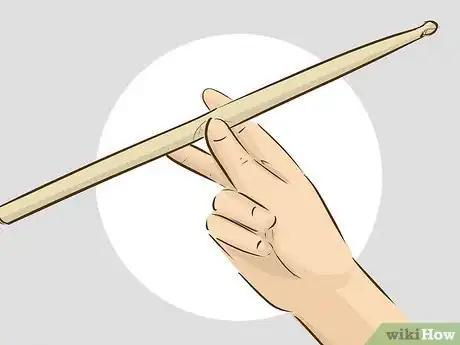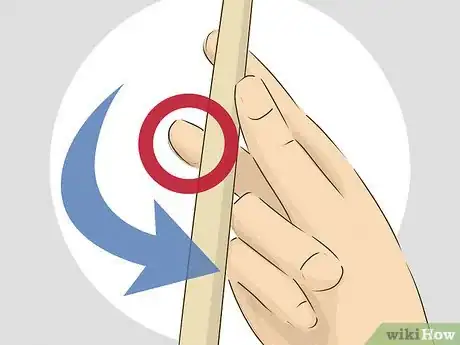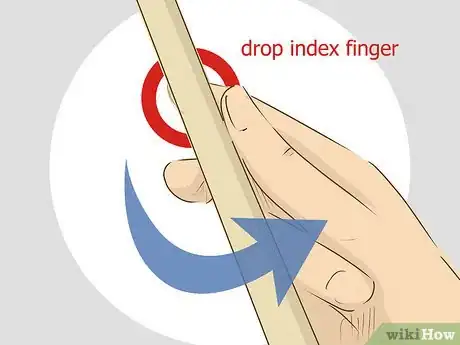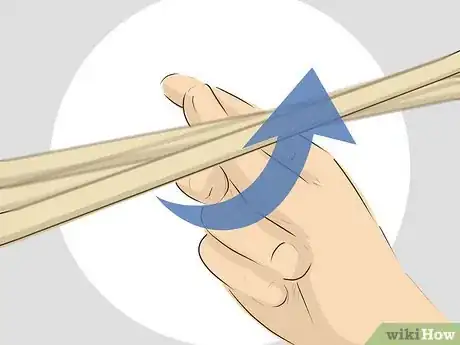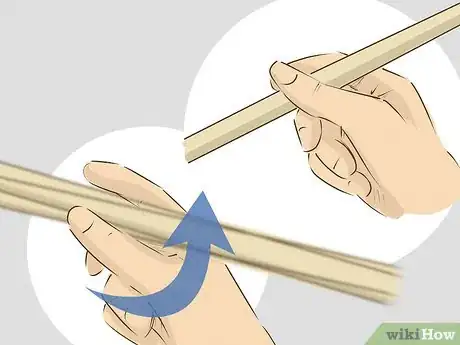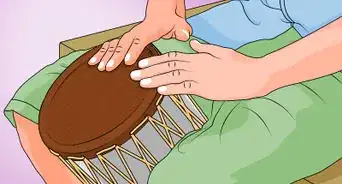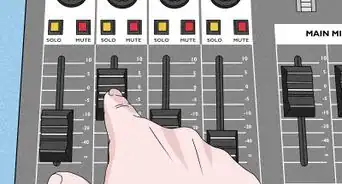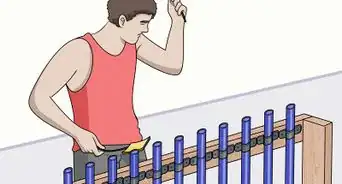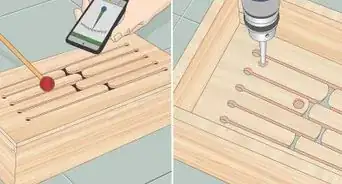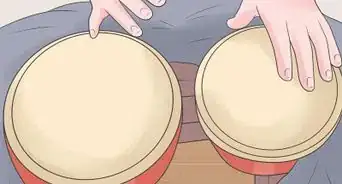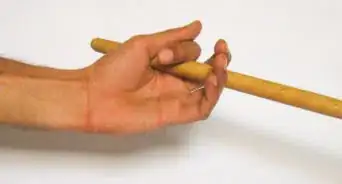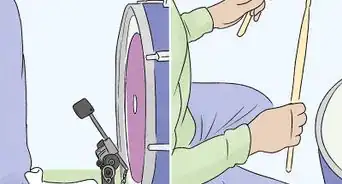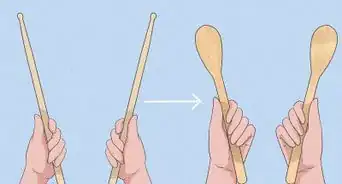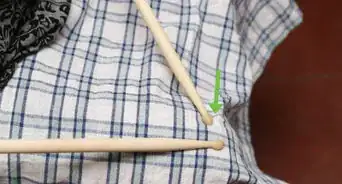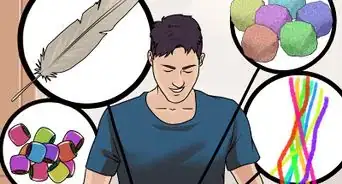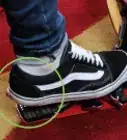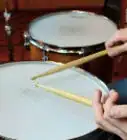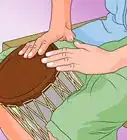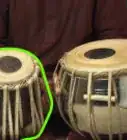X
This article was co-authored by Ryan Alexander Bloom. Ryan Alexander Bloom is a drum teacher, a former member of the Colorado-based trash metal band Havok, and a current member of the band Bloodstrike. Ryan is also an author of the Double Bass Drumming Explained series. He has a BA in Music from the University of Colorado at Boulder and has taught drumming at numerous schools throughout Colorado.
This article has been viewed 113,459 times.
Twirling drumsticks is a good way to improve dexterity in your hands, and it also looks good in between songs. While not an essential skill to develop, any self-respecting drummer on stage knows they need to spend some time practicing spins and showmanship.
Steps
Method 1
Method 1 of 2:
Mastering the Full Spin
-
1Start with the drumstick in your hand in French Grip, with the stick's center of gravity just above the index finger. If you're unsure what the French Grip looks like:
- Thumb on top of stick, running parallel
- Weight of stick rests on your second knuckle of the middle and index finger.
- Wrist and fingers are firm but relaxed.[1]
-
2As you give the stick a small push over your index finger with your thumb, keep your index finger in the same place and bring all your other fingers away. This is the momentum that carries through the entire spin. Try to keep these motions calm and relaxed, just moving your fingers and not your whole hand.
- This is often the hardest thing to start, and you may want to dedicate some time just to this "mini-spin" before moving on.[2]
Advertisement -
3Let the stick fall over the index finger and place your middle finger on the stick. The stick should now be between your index and middle finger, with the tip of the stick facing downwards.
- This sort of "push, roll, switch fingers" motion will be used throughout the spin.
-
4Let your index finger push the stick over to rest between your middle finger and third finger so that the tip is facing upwards again. Keep the pattern alive, making these half spins as you move down your hand. As you get faster, these will chain together for the dazzling pros spins you're looking for.
-
5Let the stick fall between your third and little finger. The tip should be facing you again. By now, the stick may be cheating forward, trying to slip out the tips of your fingers, slightly angling your hand up as you practice, letting gravity help a bit, may make things easier.
-
6Work the stick back up the opposite way to get back to the thumb. Simply reverse the earlier motion, alternating fingers as you rotate the string. When it gets to passing the stick to the thumb again, instead, bring your middle finger under, so that your little and middle fingers are under the stick facing you, and your third finger is on top. Then let go of your little finger and bring it around with your index finger again. You're ready to repeat!
-
7Push the stick around and hold it in between your thumb and index finger again. This kicks you off on the spin, keeping it moving over and over. Keep practicing this up and down, getting used to chaining them together smoothly.[3]
Advertisement
Method 2
Method 2 of 2:
Practicing the Mini Spin
-
1Hold the drumstick between your thumb and index & middle finger, palm up. This trick spins the stick on top of your thumb, ending it right back where it started. To do it, make a peace sign with your index and middle finger, then place your thumb on top to hold it in place.[4]
- Your thumb should be in the middle of the stick so that it is evenly balanced.
-
2Push the stick towards you with your middle finger. You actually have to push pretty hard. Remember, the goal is for the stick to spin on top of your thumb, like a coin spinning on a table. You'll need enough force to get it moving.
-
3Drop your index finger as you push with the middle. The index finger is just going to get in the way if you don't slightly drop it. Keep it down to avoid stopping the stick from spinning, but don't overdo it. All you need to move is your finger.
- Many beginners overcompensate here and move their whole hand, or really stick their finger out of the way. A half-inch down is usually enough.
-
4Keep your thumb stable as the stick spins. The stick should both rotate and move across your thumb -- away from your middle finger and towards the index.
-
5Catch the stick after one full rotation. Your thumb should never move throughout the entire motion. As the stick completes its rotation, it will start to slip down towards your index finger. Bring the finger back up in position to pin the stick back under your thumb. You're done![5]
Advertisement
Warnings
- Don't get frustrated, it takes time to do learn this motion fluently.⧼thumbs_response⧽
Advertisement
Things You'll Need
- Drumsticks
- Time to practice
- Patience
References
- ↑ http://www.drummagazine.com/lessons/post/how-to-hold-your-sticks/
- ↑ https://www.x8drums.com/blog/mastering-drumstick-tricks-and-twirls/
- ↑ http://www.musicradar.com/tuition/drums/in-pictures-how-to-twirl-a-drum-stick-by-thomas-lang-365665
- ↑ http://www.drumchat.com/showthread.php/cool-drumstick-spinning-twirls-27839.html?s=66c78f4dcc3b5569041b67d8c0763ebe&
- ↑ http://www.musicradar.com/tuition/drums/in-pictures-how-to-twirl-a-drum-stick-by-thomas-lang-365665
- Videos from Ryan Alexander Bloom
About This Article
Advertisement
